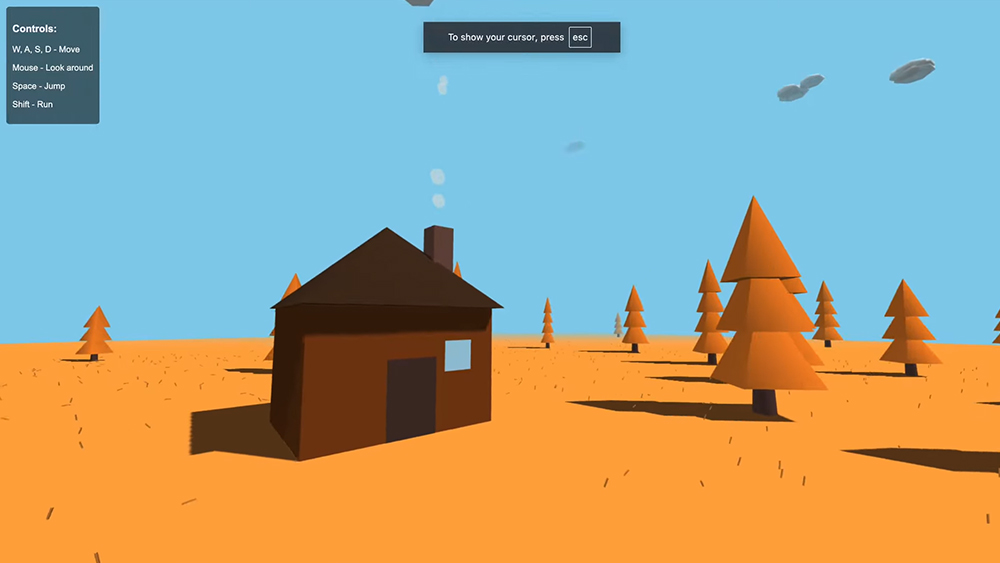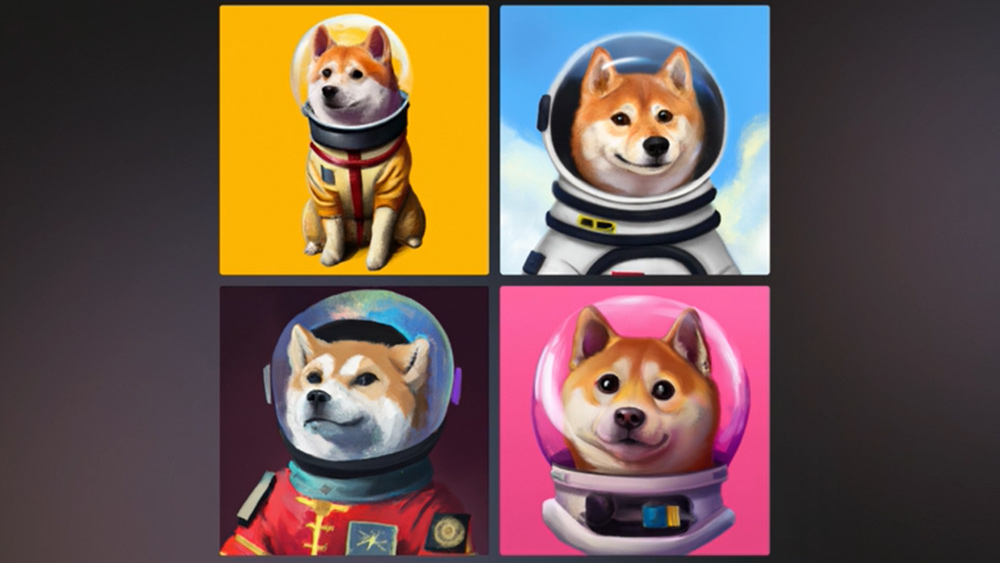
The unstoppable AI art juggernaut has truly begun rolling, and it seems everyone's jumping on board. Despite a lot of unresolved controversies, some major players are working on generative text-to-image AI art tools, and the latest news could be the biggest development yet in taking AI art generation to the mainstream.
Microsoft has revealed that it's developed AI art generators for both its Office suite and for its search engine Microsoft Bing. This means we could soon see bizarre AI art cropping up in everything from PowerPoint presentations to... well, anything really. If you're still not sure how text-to-image models work, see our piece on how to use DALL-E 2.
The use of AI image generators has surged in recent months. DALL-E 2 access is now available for all, Midjourney-generated imagery has won an art competition and Meta has revealed that it's working on a creepy AI video generator. The latest tech giant to enter the AI arms race is Microsoft, and it looks set to make AI-generated images the new clip art.
Microsoft is an investor in DALL-E 2 creator OpenAI, and we've just caught a glimpse of the fruits of that. The company plans to add DALL-E 2-powered AI image generation to its Office package via a new app called Microsoft Designer. A preview of the tool shows that it will work in a similar way to DALL-E 2 in that you type in a text prompt and the tool will generate images.
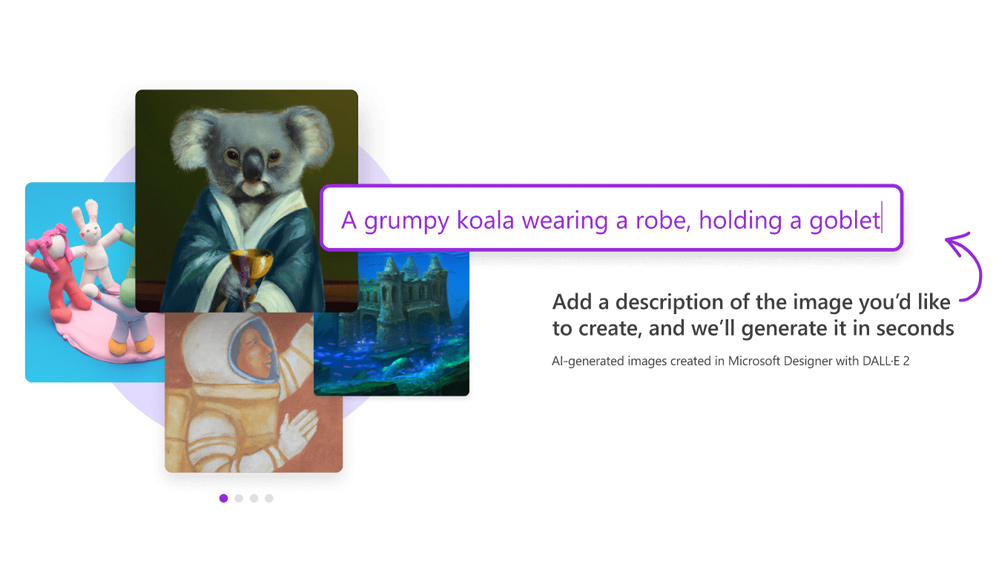
But Microsoft Designer has been conceived as a more complete design tool. DALL-E 2 generates images, while Microsoft Designer will allow the creation of all kinds of design collaterals, from greetings cards to social media posts and logos by allowing the addition of text.
Microsoft says Designer can “instantly generate a variety of designs with minimal effort.” And that may send shivers down the spines of some working designers, especially those who work for smaller businesses. There are already lots of DIY design tools on the market, but many require their own subscription. If Microsoft Designer is included within Microsoft 365 as well as a standalone app, a lot of people will already have the software on their computers.
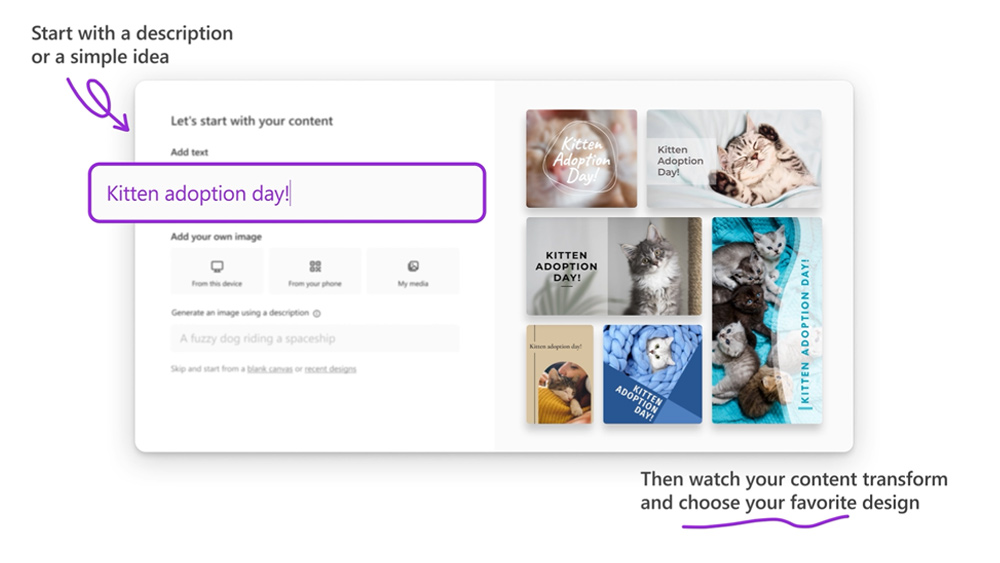
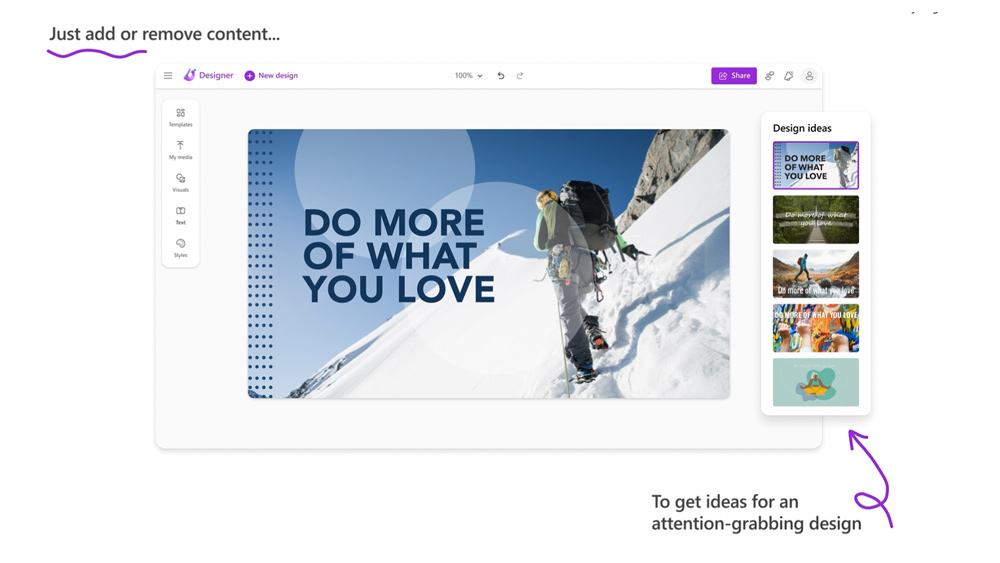
The app hasn't yet been fully launched. Like Meta and DALL-E 2 initially, Microsoft is inviting people to sign up to join a waiting list to try it out (and "help us make it great,” says Microsoft vice president Liat Ben-Zur said in a blog post).
Get the Creative Bloq Newsletter
Daily design news, reviews, how-tos and more, as picked by the editors.
Microsoft also plans to add an AI text-to-image model to its search engine Bing. Ben-Zur said users would be able to "create images that don’t yet exist". She said users would “simply type in a description of something, any additional context like location or activity, and an art style, and Image Creator will make it for you."
I'm excited to announce Image Creator from Microsoft Bing, based on a #DALLE model from our partner @OpenAI. With Image Creator, Bing is the first search engine where you can turn your own words into the images you want to see. Coming soon, learn more at: https://t.co/vc5gezgSwJ pic.twitter.com/k0BL0Ea2zJOctober 12, 2022
Microsoft Office has been much mocked for its lack of design tools, but the new announcement suggests Microsoft is out to compete with the likes of Canva. What remains to be seen is whether AI imaging tech is ready for such mainstream use. We'll have to wait to see whether the results will really be useful for people who don't have the skills to tweak them and correct imperfections using more traditional graphic design tools.
Things could also get a bit wild if people start using AI-generated images as clipart. Microsoft's promotional video for Designer uses the example of a baking blog, but it's hard to see the logic behind a blog using an image of a non-existent AI-generated cake that it can't share the recipe for. From the screenshots, it looks like Microsoft Designer might allow the option to upload original media, as DALL-E 2 does, but it's not yet clear, what users would be able to do with that. Most companies would surely be best promoting themselves with images of products that actually exist.
And this is before we get into the murky areas of copyright and potential misuse of the tools. Getty Images has banned AI-generated content from its stock image library due to doubts about where the law stands on the copyright of the imagery used to train AI models. The art generator Stable Diffusion has been heavily criticised for allowing people to create images of famous people, including nonconsensual pornographic content. Ben-Zur said Microsoft was taking "a measured approach" to Bing's Image Creator and would begin with "a limited preview for select geographies".
For more developments in AI image generation, see the best AI art generators compared. And for some recent examples of how AI technology has been used, see the viral Netflix Zelda posters that have sent fans into a frenzy and listen to the creepy AI Steve Jobs interview.
Read more:

Thank you for reading 5 articles this month* Join now for unlimited access
Enjoy your first month for just £1 / $1 / €1
*Read 5 free articles per month without a subscription

Join now for unlimited access
Try first month for just £1 / $1 / €1

Joe is a regular freelance journalist and editor at Creative Bloq. He writes news, features and buying guides and keeps track of the best equipment and software for creatives, from video editing programs to monitors and accessories. A veteran news writer and photographer, he now works as a project manager at the London and Buenos Aires-based design, production and branding agency Hermana Creatives. There he manages a team of designers, photographers and video editors who specialise in producing visual content and design assets for the hospitality sector. He also dances Argentine tango.
